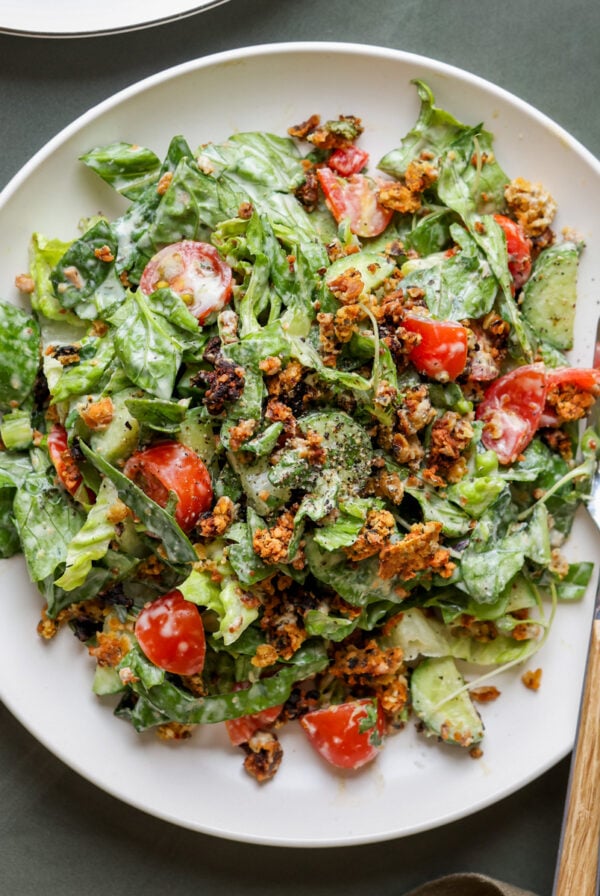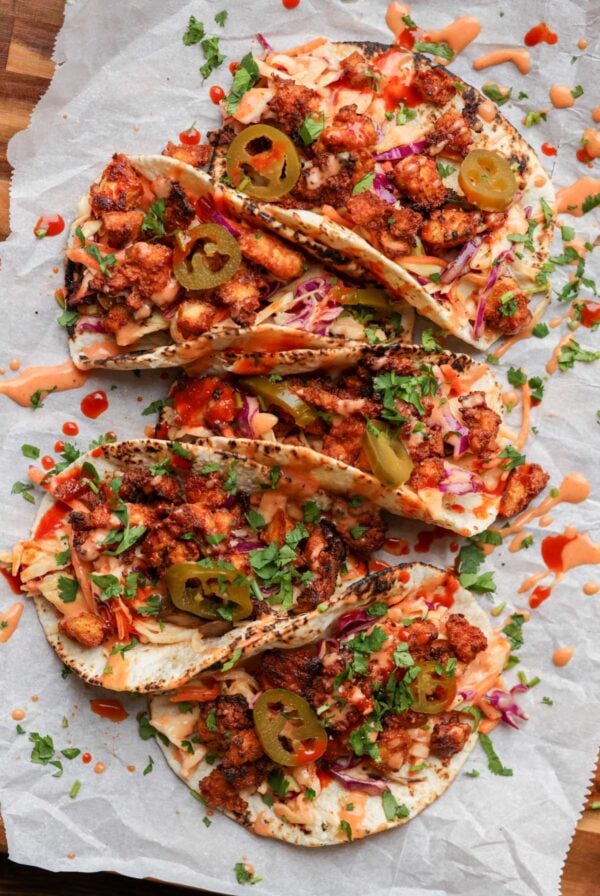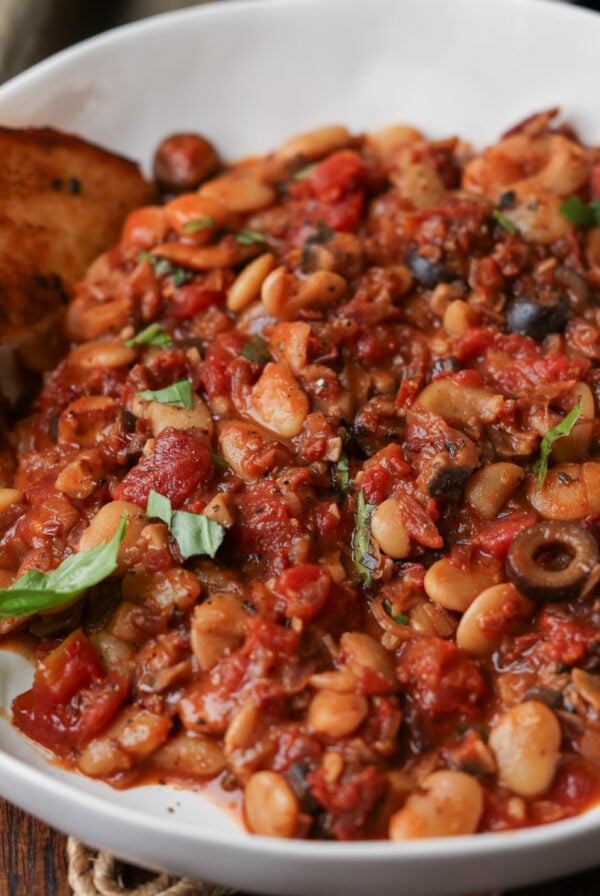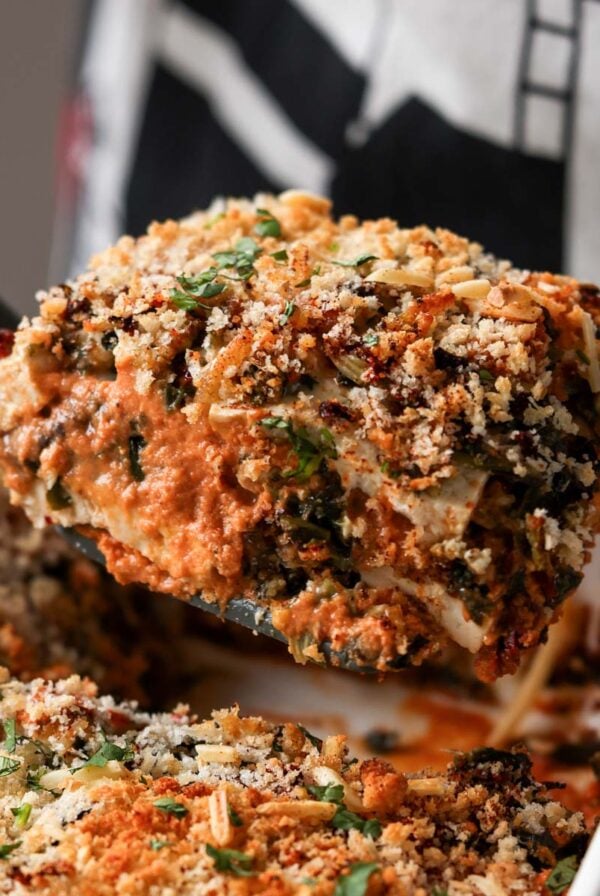This post contains affiliate links. Please see our disclosure policy.

A quick update about things going on with my book. Its already been a month! See the Errata at the bottom of the post for errors and missing things. A big Thank you to everyone who has been cooking from it. I love seeing all the awesome food pictures!!
Availability in UK:
The book info has a later release date in UK and Europe on some websites as they need a metric conversion chart. The chart was missed in the first print and will be in the second printing. Books are however shipping, have shipped and are available to order since release date of May 19 on Amazon.co.uk and Bookdepository.com. For other International availability links, see here. If you find the book elsewhere, do leave me a comment with the link!
International and kindle orders also quality for the Free Bonus recipe Bundle! That offer is only till the end of June(email me at veganricha @ gmail).
Pictured above – Cabbage Kofta in creamy tomato sauce (Patta Gobi ke Kofte). Pictured Below – Saffrom Cream Fudge (Malai Peda) Dairy free!
Now for some interesting Tips for cooking Indian food and some insider info from Vegan Richa’s Indian Kitchen.
1. Spices, Herbs and Pantry Shopping
Most Indian Spices and herbs are available in regular grocery stores. Some of them though are only available in Indian stores local or online, or on amazon.com. Find your nearest Indian grocery store, or online shopping options on the Indian Pantry page. Similarly most dals, lentils, pulses, beans are also available in many regular grocery stores. Some of them might be available only in Indian stores or online. In the book, I do try to provide alternate dal/bean options wherever possible.
Depending on where you buy the Spices and pantry ingredients from, they might use just the English names, both English and Hindi names, or just the Hindi/Indian names (eg. in Indian stores). English names sometimes also depend on the country or shop (for eg yellow lentils can mean any of the yellow dals). Take a picture of the Grocery list from Page 12 in the book to take with you while shopping. It has both the English and Hindi names and variation of the names mentioned to make it easy to find the right spice, herb or dal!
2. Food comes out too spicy, Bland etc: Whether its my recipe or any other Indian recipe, to adjust the heat, reduce or increase the hot spices to preference like cayenne, pure chili powder, black pepper, pepper flakes, hot paprika etc. Age and brand of the spices also matter. Hot green chilies can sometimes be too hot or can be a dud. So if they are the main source of heat in the recipe, the range of heat will depend on the chile. If unsure, use less of the green chile and adjust the heat later by adding some cayenne.
Indian food is rarely ever on the bland side unless by design for everyday veggie sides or khichdi etc. If the flavorful recipes are making bland food it could be either of the following issues. The food needs more 1.Salt, salt often will bring out the layers of flavor in the dish when it correctly salted to personal taste. The dish needs fresher spices – 2.old spices can have a very low flavor pay off and you might need to add more of the old spices or get a fresh lot. The spices are not getting 3.roasted long enough. Some recipes use whole spices that are roasted a certain way to release all their flavor into the dish(Try oil roasted cumin seeds vs unroasted, its a big flavor difference). If those spices are not getting the heat or time they need for the roasting, they don’t infuse the dish well. They will eventually infuse the dish after a day but the initial flavor pay off might be underwhelming. 4. Expectation: Not all Indian food has layers and layers of spices and flavors. A lot of everyday Indian food is simply spiced with a spice or 2 to add a hint of flavor, to appreciate the local produce and beans in their natural flavor/texture and enhance them with complimentary spice/herb flavor, For eg. Mung Dal tadka uses only mustard seeds, garlic and chili, blissful.
3. Curry powder is not garam masala and is never used in India. 🙂 Curry powder is less flavorful and has turmeric and other additions that are usually not present in garam masala. Curry powder is a British or Western spice blend approximating the masala spice blends from north and south India. It works well as a spice blend to add to dishes, but is definitely not a traditional or authentic flavor profile. Use garam masala spice blend or the mentioned spices in Indian recipes. I generally buy or make whole spice garam masala as the whole spices stay fresh longer (upto 1 year). I grind a small amount like a 1/4 to 1/2 cup and keep it to use in a month or so.
Oh yes, And curry powder has nothing to do with curry leaves 🙂
Curry Leaves -Kadi patta, also called kadipatta, karivepallai, or sweet neem leaves, come from a subtropical tree native to India. The leaves are highly valued as a seasoning in southern and west-coast Indian and Sri Lankan cooking, and are usually fried along with the chopped onion in the first stage of the preparation. In their fresh form, they have a short shelf life and do not keep well in the refrigerator. You can freeze the fresh leaves very loosely packed in an airtight container for a few months. They are also available dried, though the aroma is largely inferior. You can add them to food whole or chopped. The curry leaves can be eaten along with the food or removed during eating. There is no good substitute for curry leaves.
The term “curry”, when used for Indian dishes, simply means a sauce. Therefore, dals can be thought of as legume curries. “Curry” is used to describe sauces, not a powder or flavoring or one sauce. Curries can be dry, thin, thick sauces, and orange, yellow, red, brown, green, cream and other colors!
Often curry is added to the name of the dish to help one understand what to expect. For example, Balti Veggies, Chettinad Veggies, Chana Palak, Madras Veggies etc make a bit more sense with a curry or sauce added to the name, like Veggies in Chettinad sauce. If you don’t like one sauce/curry, try another one or rather one from about a 100 in the book!
Below: Rasmalai – Spongy balls in Saffron cream in the book. so good!
4. Besan and Chickpea flour! The mix up or is it? !!
Chickpea flour is made by grinding up garbanzo beans, usually white garbanzo beans in the United States. Besan (gram flour) is flour of skinned brown chickpeas (often Chana Dal, which is skinned and split Brown chickpeas). Besan is also more finely ground than chickpea flour. In most recipes, chickpea flour and besan can be used interchangeably, as the flavors are similar, but they are not the same.
The recipes in the book specify which type of flour works best. Chickpea flour is more readily available than besan in regular grocery stores and online in the US.
Chickpea flour needs more water than besan to give the batter a similar consistency. To substitute besan with chickpea flour in a recipe, use more water than mentioned. To substitute chickpea flour with besan in a recipe, use less water (or more besan) for the same consistency and result.
Spicy Kashmiri Rogan Josh – Spicy Paprika Yogurt Sauce with Tempeh and Cauliflower (below)
Asafetida (hing) is great to add to tempering for beans and dals to help with digestion. It has a fetid fragrance, but in cooked dishes it delivers a flavor reminiscent of leeks and garlic. Always store asafetida in an airtight container. Asafetida itself is gluten-free, but it is usually ground along with a starch which is generally wheat. Hence, the ground asafetida is generally not gluten-free. It can be found ground with rice flour/starch or corn as well. Always check the label. Get the whole asafetida crystals to avoid gluten contamination and get them ground at a spice shop with the flour/starch or choice.
Indian Dals are generally a bit over cooked. The preferred consistency is more porridge like or really soft whole beans that can easily get mushed into the sauce. The book recipes mention to adjust cooking time to preferred consistency of lentils, split peas, chickpeas and beans. Check earlier towards the end and take off heat when they are done to preference.
See Pictures of the most common dals and beans with their English and hindi names here.
Tomatoes: I usually use fresh, just-ripe Roma or other tomatoes. They are firm, not too sweet, and just tart enough and work best in Indian recipes. I rarely use canned or crushed tomatoes as they are sweeter and add so much tomato flavor to the sauce that they tend to mask the complex magic of the spices and herbs. If you are in a rush, use half fresh and half canned, plus add more spices to taste later if needed.
Below- Pistachio Cardamom Cookies – Nan Khatai.
Fenugreek seeds, dried or fresh leaves have a bitter flavor which is essential in certain dishes. Ground fenugreek seeds can be substituted for the dried leaves. Use 1/4 teaspoon ground fenugreek seeds for every 1 teaspoon dried leaves.
Skillets: Skillets are important in Indian cooking. A separate nonstick or cast iron skillet for crepes or flatbread is needed to make crepes, flatbreads, and pancakes. I have two dedicated skillets: one for pancakes, omelets, and crepes; and one for rotis, naan, and other flatbreads. Using the skillets for other cooking that involves stirring or juices in the food can cause the skillet surface to change. Crepes such as dosa and chickpea flour chilla will then begin to stick to the skillet, creating a mess! I actually have another dedicated skillet for only Dosa crepes.
Taste Adjustment: Tastes are very personal. Through the testing of the book and my personal preferences, the recipes have worked perfectly for the testers in terms of spices (for flavor), heat (cayenne, peppers), salt. All of these are adjustable to preference. If you are unsure about the spices, heat, salt, start with a lower amount. Taste and add more towards the end of cooking of the dish. On the other hand, If you feel the dish seems a bit bland, add more salt, spices, heat. Most often, extra salt and some extra cayenne/red chili powder should work. Traditional Indian food is generally salty. Salt is often the one ingredient that can support the rest of the spices to bring the flavor together.
If you cooked from the book and loved it, please do leave a review on Amazon.com! It would be so helpful. Thank you to everyone who did and left me such wonderful and kind words! <3
Below – Vegetables in luxurious Royal Sauce – Navratan Korma. This sauce has helped the kids finish up the veggies on their plate and ask for more! And yes, the bay leaf gets blended into the sauce! Bay leaves are also a part of garam masala in ground form.
Errata:
- Use a very ripe avocado. Mash the Avocado really well. Mash and whisk and mash so it is a very smooth creamy mixture.
- Use 3 cups of flour instead of 3.5 cups of flour at Step 3. Its easier to add flour later than adjust moisture in a harder dough.
- Keep the dough very soft/sticky-ish. Add extra water at any step by spraying some water on the dough, shaped dough balls or shaped Naans.
- Let the shaped Naan rise for 5 minutes before baking/cooking.
Before you go Checkout all #VeganRichasIndianKitchen on Instagram!

















Can you make a post about the different varieties of butter chicken? I hate how they never taste the same.
Nice Recipe. I just test this recipe and enjoy with my kids and family.
great!! Thank you
I like how you mentioned that taste is important when preparing a dish. My nephew wants to try Indian food, and that’s why I’m looking to find a good dish to try. I appreciate you helping me learn more about Indian food. I’m going to start looking for an Indian restaurant.